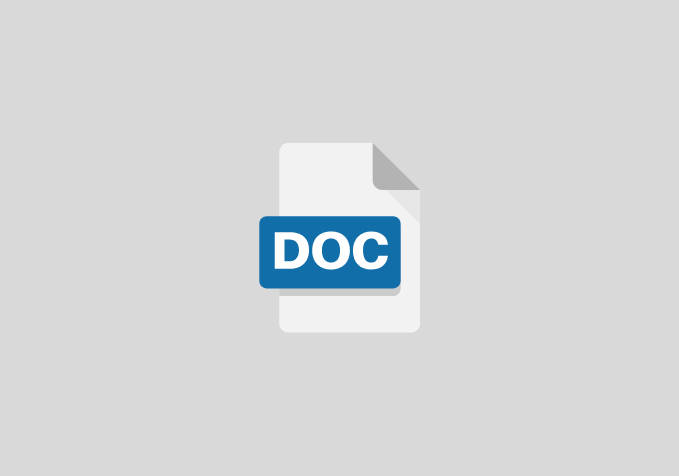Impact of Fringe Benefits on Employee Performance
CHAPTER ONE
Objective of the study
The objectives of the study are;
- To highlight fringe benefit to workers
- To explain to management advantage inherent in fringe benefit
- To know if the application of fringe benefit has been put to optimum.
- To know the extent which fringe benefit has facilitate efficient employee’s services.
CHAPTER TWO
REVIEW OF RELATED LITERATURE
Theoretical Review
Expectancy Theory
The Expectancy Theory of Motivation provides an explanation of why individuals choose one behavioral option over others. The basic idea behind the theory is that people will be motivated because they believe that their decision will lead to their desired outcome (Redmond, 2010). Expectancy theory proposes that work motivation is dependent upon the perceived association between performance and outcomes and individuals modify their behavior based on their calculation of anticipated outcomes (Torrington, 2009). This has a practical and positive benefit of improving motivation because it can, and has, helped leaders create motivational programs in the workplace. This theory is built upon the idea that motivation comes from a person believing they will get what they want in the form of performance or rewards. Although the theory is not all inclusive of individual motivation factors, it provides leaders with a foundation on which to build a better understanding of ways to motivate subordinates (AETC, 2008). Expectancy theory is classified as a process theory of motivation because it emphasizes individual perceptions of the environment and subsequent interactions arising as a consequence of personal expectations.
CHAPTER THREE
RESEARCH METHODOLOGY
Research design
The researcher used descriptive research survey design in building up this project work the choice of this research design was considered appropriate because of its advantages of identifying attributes of a large population from a group of individuals. The design was suitable for the study as the study sought the impact of fringe benefits on employee performance.
CHAPTER FOUR
PRESENTATION ANALYSIS INTERPRETATION OF DATA
Introduction
Efforts will be made at this stage to present, analyze and interpret the data collected during the field survey. This presentation will be based on the responses from the completed questionnaires. The result of this exercise will be summarized in tabular forms for easy references and analysis. It will also show answers to questions relating to the research questions for this research study. The researcher employed simple percentage in the analysis.
CHAPTER FIVE
SUMMARY, CONCLUSION AND RECOMMENDATION
Introduction
It is important to ascertain that the objective of this study was to ascertain impact of fringe benefits on employee performance. In the preceding chapter, the relevant data collected for this study were presented, critically analyzed and appropriate interpretation given. In this chapter, certain recommendations made which in the opinion of the researcher will be of benefits in addressing the challenges of fringe benefits on employee performance
Summary
This study was on impact of fringe benefits on employee performance. Four objectives were raised which included: To highlight fringe benefit to workers, to explain to management advantage inherent in fringe benefit, to know if the application of fringe benefit has been put to optimum and to know the extent which fringe benefit has facilitate efficient employee’s services. In line with these objectives, two research hypotheses were formulated and two null hypotheses were posited. The total population for the study is 200 staffs of Delta cement company Ughelli. The researcher used questionnaires as the instrument for the data collection. Descriptive Survey research design was adopted for this study. A total of 133 respondents made managers, administrative staff, senior staff and junior staff were used for the study. The data collected were presented in tables and analyzed using simple percentages and frequencies
Conclusion
That fringe benefits were statistically significant to influence employee productivity as follows: The study established that security benefits contributed to employee self-development thus concluding that employment security benefits have a positive effect on employee productivity in the public sector. The study also revealed that health of the workforce is inextricably linked to the productivity of the workforce and the health of the nation’s economy, thus concluding that health protection benefits had a positive effect on employee’s productivity. The study further established that Pension strongly influenced workers‟ behavior, giving younger workers a compelling reason to continue working for their employer and encouraging older workers to retire on a timely basis, thus concluding that retirement benefits positively affect employee productivity.
Recommendation
The study also recommends that the government should continue providing health protection benefits to its employees since it will help them create a sense of loyalty and encourage their productivity. The study continues to recommend that the government should review the current retirement package since a good retirement package will attract and retain employees and also improve their productivity.
References
- Abbasi, S. & Hollman, K. (2000). Turnover: The Real Bottom-line. Public Personnel Management, 29(3), 333-342.
- Adrian, Gostick, (2000). “They Do Recognition Right”, Workspan, October, 34-36.
- Allis, Ryan P. (2008). Zero to One Million (1st edn): McGraw-Hills.
- Andrews, Sudhir (2009). Human Resource Management: A Textbook for Hospitality Industry. Tata McGraw Hill.
- Armstrong, M. (2006). A Handbook of Human Resources Management Practice (10th ed).
- Atkinson William, (2000). Is Worker‟s Comp Changing? HR Magazine. July, 50-61.
- Auer, P., and Fortuny, M. (2000). Aging of the Labour Force in OECD Countries: Economic and Social Consequences. Employment Paper 2000/2. International Labour Office.
- Baase, C.M.D., (2009). Testimony before the Senate Committee on Health, Education, Labor and Pensions 23.
- Baker D (2012), „Why has the British. National Minimum Wage had little or no Impact on Employment?‟ Journal of Industrial Relations, 50, 489-512.
- Barghman, R. (2002). Productivity & Wage effects of „family friendly‟ fringe benefits.


